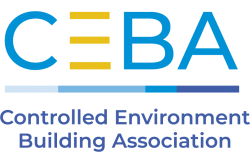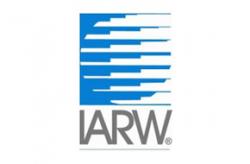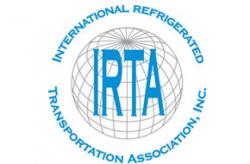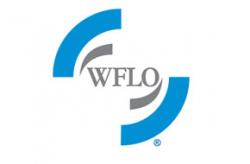The New Normal in HR
From social inequity to virtual recruiting to vaccines, human resource leaders are challenged like never before.
The outlook for the labor market in 2021 hinges on the path of the COVID-19 virus, the expediency of vaccination dissemination, politics and policy, and the extent to which pandemic-era behaviors, like remote work, become permanent.
Even small shifts in these trends, if permanent, could cause big changes in how businesses hire, how job seekers search, where people live, and how much they earn. A full year into the global pandemic, human resource leaders from the cold chain industry are confronting these changes as they continue to obsess over team safety. And all while grappling with issues that range from supporting at-risk employees living in multi-generational households, to confronting diversity and inclusion gaps, to integrating thousands of new employees in 11 countries – virtually.
Vaccination Policies
“In a climate where health and safety measures, like wearing a mask, can become politicized, human resources, along with everything else, becomes harder,” admits Ashley Albers, Vice President of Human Resources, Nor-Am Cold Storage. “We don’t want to infringeon our team members’ personal freedoms or opine about the level of personal risk in their lives, but when those personal freedoms impact hundreds of people they work with every day, and politics enter the picture, everything is heightened.” Albers says the company’s approach to the COVID vaccination will be similar to how they promote flu shots to their teams.
“We want our teams to be aware of insurance coverage and encourage vaccination as a healthy choice,” says Albers. “It is always better to counsel in the spirit of education.” “Since the pandemic started, we’ve been very explicit with our people about the value of the work they do and how essential it is to our communities,” explains Michele Huffman, Vice President of Human Resources, Americold. “If based on that criteria we were able to provide a vaccine sooner to our employees who want it, we would be very proud and pleased to be able to do that.” “We are not making vaccines mandatory for now, but we’re trying to take the lift off of our workers who do want to get vaccinated, by helping them get scheduled,” says Lori Cogit, Vice President, Human Resources, RLS Logistics. “It’s important because some team members don’t have the ability, or information needed, to do so themselves at this point.
” Cogit says she is in constant communication with teams through a texting app. “We use team chat to educate and communicate – not push. We provide CDC metrics and make sure they know that in addition to HR, they have other resources such as our occupational health provider.” “We have elected to encourage the vaccine, not mandate it, however we are exploring an incentive bonus to allow team members to get the vaccine on their own time,” says Darcee Scavone, Vice President, Talent, Culture & Community Engagement, Lineage Logistics. Rick Vine, Human Resources Director – Asia Pacific, Lineage Logistics, notes there has been a lot of discussion and legal advice as they move into the next phase of the pandemic.
“Following social norms that vaccinations will be encouraged but not mandatory, can an employee refuse to work with a non-vaccinated employee or can they sue the workplace if they catch COVID from a colleague?” Vince Vanderlaan, Regional Human Resources Director, NewCold, reports from Europe that employees are encouraged to get vaccinated as they become available, but they are carefully watching the legal landscape around mandated vaccinations. “Right now, we are staying aware of vaccination distribution across all our locations globally so we can openly communicate to employees when they may be eligible.”
Telework and Other Trends
Scavone says they continue to have administrative staff work from home and do not have a timetable to return to the office. “We conducted a team member survey earlier in the pandemic and the feedback we received is, going forward, our administrative employees would like a hybrid telework/in-office model.” “Working from home will continue without a doubt, and I, for one, don’t miss the bumper-to-bumper traffic of Melbourne, Australia,” says Vine. “Leaders who may have held some reservations on the value of working from home and achievement of workloads now recognize that people will deliver, and work does get done.” Vanderlaan says telework is an ongoing process and has made the company rethink its business practices. “We were lucky to already have a strong technology infrastructure that allowed us to shift to remote work for all employees that could do their work from home,” he says. “Regarding permanence, it’s possible, but we really value the casual collaboration that can happen in between conversations at the office, for instance. With that said, one of our focuses right now is how can we replicate that collaboration in a virtual environment.” “We have 42 locations but one of the things I’ve noticed is certain departments are doing better working from home, such as IT, logistics and billing,” notes Nicole Janeczek, Director, Human Resources Operations, United States Cold Storage.
“Moving forward, we might be more flexible with certain departments or positions within departments. It’s a benefit to the worker as well as a benefit to the company.” Janeczek says the company is also looking at sustaining some hybrid solutions as they open up. “Even now in some locations employees come in voluntarily, it’s working quite well and it gives us the ability to rotate teams. Employee flexibility moving forward has been one of our biggest lessons.”
“We bought another company in 2020, and if not for COVID, I’d be one of 10 to 20 employees making multiple trips to Europe now for integration and to meet new counterparts – that’s how you come together as one global company,” Huffman points out “Now global company integration is happening in Atlanta, Georgia, via Webex.” Huffman says that is an example of a remote working opportunity the company will continue to explore as it affords employees greater balance between quality of life and work. She adds that adversity like the pandemic provides the opportunity to rethink everything and to be more efficient and cost effective. “We used to fly employees from the same region to Atlanta for our leadership development program, but now we’re doing it all digitally on a platform that allows for small breakout sessions,” Huffman acknowledges.
“My epiphany – not only is it cost effective, but now we can have folks from all over the world come together for development.” Cogit concedes that telework opens up a whole new geographic area from which to recruit. “It’s especially valuable in an area like southern New Jersey, where our biggest facility is located, because everyone heads to more urban areas for work. We are going to be forced to be comfortable with telework, whether we want to or not, because otherwise we lose candidates to other companies offering hybrid or full telework opportunities.” Albers notes one change that will carry on permanently after the pandemic – no coming to work sick. “Personal time off and attendance policies will permanently change with more flexibility and no judgements or consequences for taking sick leave. There has been a whole culture shift around the perception of the resilient warehouse teams who tough it out – now they stay home when they’re under the weather.” She adds it hasn’t cost the company anything to relax the policy and the benefits are already evident in how fewer team members missed work because of the flu this past winter. Another practice that will be become permanent is employees using a mobile phone app to clock in and out, says Albers.“It works great with geo-fencing, you know where your team members are, and doing away with a communal pad eliminates a high touch point and crowded lines of workers waiting to punch in.”
Recruiting and Retaining
“Cold is the new hot – we did see an uptick in interest in working in the cold chain but not so much because of media coverage of our industry, but because of layoffs at other companies,” Huffman explains. “We were proactive about connecting with our HR counterparts at companies that were forced to lay off employees – such as companies that load food for the airlines – and were able to attract candidates that would have not previously considered working in the cold storage industry. It’s redeploying the supply chain.” Huffman adds that not only is virtual recruiting here to stay, but the flexibility of working from home proved to be extremely successful for both the company’s internal and external recruiters. Albers says recruiting was tough before the pandemic as most of the company’s warehouses are located in areas with low unemployment, and it only got tougher over the past year. However, the company managed to hire enough team members to bring a new facility into operation. “We hired 80 people during a global pandemic,” she says. “It wasn’t always pretty, but we got it done.” Albers notes that in the middle of recruiting for the new facility, local meatpackers raised their starting rates, which affected the hiring pool. “We used temporary appreciation bonuses to recruit and retain, but eventually we had to increase our starting rate as well. We’re a small community and we have to remain a competitive recruiter.”
As the public is more aware of the cold chain industry since the pandemic began, Albers says they put “essential employer” in most job ads. “We want to make clear that with a job in an essential industry comes consistency, stability and growth.” For Scavone, recruiting talent also became more difficult during the pandemic, but because of the incremental explosion of e-commerce. “While there is a much broader awareness of the importance of the cold chain industry, the competition is fierce,” she says. “We have been forced to carefully monitor, and sometimes adjust, wages in key markets.”
To help stay competitive, Scavone says they have invested in a new applicant tracking system, explored new advertising and app strategies and are measuring their ROI carefully. “We completed an engagement survey last fall and are in the process of developing actions plans,” she says. “We have also worked with a third-party consultant to develop a comprehensive attract, engage and retain playbook that we expect to roll out this year.” “One of the strategies we’re looking into is hiring people using the occasional and parttime worker model – there are 57 million occasional and part-time workers in the United States, and half of them are doing their gig jobs on top of fulltime employment,” Janeczek points out. “This past year has taught us the value of flexibility – both for us and our team members. It’s a smart strategy to differentiate your company from all the other warehouses you’re competing with in these smaller towns by offering flexibility to work on an occasional basis – especially during our peak times.” Janeczek adds flexible warehouse jobs are attractive to students who have to work around class schedules. “You can continue grooming these part-time workers as potential management candidates.” Vanderlaan says one key area focus of focus for the company globally is employee onboarding. “We believe it’s critical to engagement, retainment and setting our employees up for success,” he says.
“Onboarding has always been important, but now we need to ensure that our onboarding is enabled both for in person (once all employees are able to return to the office) and virtually.”
Diversity and Inclusion
Events in the United States in the summer of 2020 brought the issue of social equity front and center for companies around the world. “We have a renewed focus, both at the regional and global level, and continue to be invested in growing and maintaining a diverse and inclusive workforce,” remarks Vanderlaan. “We want to make sure our employees are supported by not only words, but actions and practices that anchor us as an inclusive workforce. There have been many internal conversations on how we can best support our employee base and ensure our workplace is diverse, equitable and inclusive.” Huffman notes diversity is a very prominent conversation all the way to the board level.
“Broken paradigms let you look at things differently and offer an opportunity to selfreflect and be honest about where you can be stronger.” She says the company is creating a Global Culture Council to ensure the voices of its employees around the world are heard and part of the solution. “It all begins with listening to what our people are saying about working at our company, from a diversity and inclusion standpoint, what does good look like to them, and then determining what would be best for our people.” In 2020, Scavone reports her company hosted virtual inclusion and diversity awareness training for all its leaders, invested in blind slate resume redaction and job optimization/bias elimination technologies and incorporated these tools in standard recruiting processes. “Lineage has committed to invest further in our DEI (diversity equity inclusion) journey by working with third party consultants to understand our team members' DEI experiences, synthesizing feedback and creating a DEI strategic roadmap to be shared with team members later this year.”
“We looked into what we could be focusing on, looked at our human resource numbers and data and confirmed we had a wellrounded and diverse workforce by any criteria,” Cogit explains. “What we weren’t doing a good job on was inclusion. In the summer of 2020, we started to look into unconscious bias, and that’s where we want to focus on educating ourselves and our workforce.” She says they have added unconscious bias training to their onboarding process and added courses on inclusion and unconscious bias to L.E.O. Academy, the company’s internal training and development program.
The New Normal
“During this pandemic, we have had to advocate for our employees every step of the way,” Albers says. “We learned early on, the squeaky wheel gets things done. Individually, our people don’t have a loud voice, but collectively they do. Who will fight for them if not us?” “This pandemic has made us feel like we’re questioning who we want to be when we grow up, and now we’re in a new adolescent phase as we explore how to operate in the future norm,” suggests Huffman. “Being such a global company with so many locations, we try to stay fluid and not make blanket decisions but rather think about our folks around the world – there’s no cookie-cutter approach to this.” “Working from home will continue at a higher participation rate than pre-COVID for quite some time, telecommuting and teleconferencing are becoming the new norm,” Vine says. “The cold chain is now known to people who would normally not have considered how their food arrives in the store, and our people are recognized as vital to the food chain.” “I don’t believe we’re ever fully going back to living our lives as they were before – there will always be that hesitation about proximity to others, and it will have an impact on infrastructure as we build new workspaces,” acknowledges Cogit. “The ability to have people working remotely is going to grow along with workplace practices and policies. There are different definitions of normal and we need feedback from our employees about what they would want a new sense of normalcy to look like.”
ALEXANDRA WALSH is a Senior Publishing Consultant with Association Vision and Editor-In-Chief of COLD FACTS.
Source: Cold Facts Mar/Apr 2021 issue



